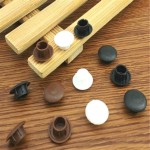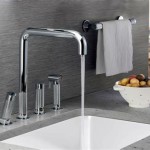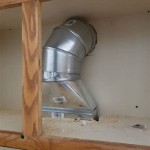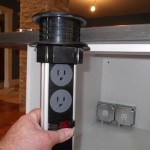A Comprehensive Guide On Under Mount Kitchen Sinks
Undermount kitchen sinks, characterized by their installation beneath the countertop, have gained significant popularity due to their sleek aesthetics and functional benefits. This guide provides a detailed overview of undermount sinks, covering their various types, materials, installation methods, advantages, disadvantages, and maintenance requirements.
Understanding Undermount Sink Types
Undermount sinks are available in a range of configurations to suit different kitchen layouts and needs. Some common types include single-bowl, double-bowl (equal and unequal size), and triple-bowl sinks.
Single-Bowl Sinks: These sinks offer a large, uninterrupted workspace. They are well-suited for smaller kitchens or for individuals who frequently wash larger pots and pans. The absence of a divider makes maneuvering bulky items easier. Cleanup is also generally simpler due to the smooth, continuous surface.
Double-Bowl Sinks: Double-bowl sinks provide two separate basins, each serving a distinct purpose. Equal-sized bowls are ideal for tasks such as washing and rinsing. Unequal-sized bowls offer versatility, with a larger bowl for washing and a smaller bowl for food preparation or disposal of waste. The dual-basin design allows for better organization and multitasking within the sink area.
Triple-Bowl Sinks: Triple-bowl sinks are less common but offer the most extensive functionality. They typically include a large main basin, a smaller basin for food disposal or a garbage disposal unit, and a third, smaller basin for rinsing. These sinks are suitable for larger kitchens where multiple users may be working simultaneously.
The choice of sink type is dependent on the available space, the user's cooking habits, and the desired level of functionality.
Exploring Sink Materials
The material used to construct an undermount sink significantly affects its durability, appearance, and maintenance requirements. Common materials include stainless steel, cast iron, granite composite, and fireclay.
Stainless Steel: Stainless steel is a widely favored material for kitchen sinks due to its resistance to corrosion, staining, and heat. It is also relatively affordable and easy to clean. Stainless steel sinks are available in different gauges, with lower gauge numbers indicating thicker, more durable steel. A brushed finish helps to minimize the appearance of scratches and water spots. The downside can be noise; thicker gauges help mitigate this issue.
Cast Iron: Cast iron sinks are known for their durability and classic appearance. They are typically coated with a layer of enamel, providing a smooth, non-porous surface. While durable, the enamel coating can be susceptible to chipping or scratching. Cast iron sinks are also heavier than stainless steel sinks, requiring stronger support structures.
Granite Composite: Granite composite sinks are made from a mixture of granite stone dust and acrylic resins. They offer excellent resistance to heat, scratches, and stains. Granite composite sinks are available in a variety of colors and textures, making them a versatile choice for different kitchen designs. They are typically more expensive than stainless steel sinks but offer a high-end aesthetic.
Fireclay: Fireclay sinks are crafted from clay fired at extremely high temperatures, resulting in a dense, durable material. They possess a glossy, smooth surface that is resistant to stains and scratches. Fireclay sinks are often used in farmhouse-style kitchens due to their distinctive appearance and deep basins. They are a high-end option, often commanding a significant price.
Each material offers distinct advantages and disadvantages. The selection process should consider the desired aesthetic, budget, and expected usage.
Installation Considerations
Installing an undermount sink requires careful planning and execution. The process involves securing the sink to the underside of the countertop, requiring precise measurements and the use of appropriate adhesives and mounting hardware. Professional installation is recommended to ensure a watertight seal and prevent potential damage to the countertop.
Countertop Preparation: The countertop must be properly prepared to accommodate the undermount sink. This involves cutting a precise hole in the countertop based on the sink's dimensions. The edges of the cut-out must be smooth and clean to ensure a secure and flush fit. Countertop materials like granite and quartz typically require professional cutting to avoid cracking or chipping.
Adhesive and Mounting: The sink is typically attached to the underside of the countertop using a combination of adhesive and mounting clips. The adhesive provides initial bonding, while the mounting clips offer additional support and stability. The type of adhesive and mounting clips used will depend on the sink material and the countertop material.
Sealing: A bead of silicone caulk is applied around the perimeter of the sink where it meets the countertop to create a watertight seal. This prevents water from seeping between the sink and the countertop, which can lead to mold growth and water damage. The caulk should be applied evenly and smoothly for optimal protection.
Plumbing Connections: Once the sink is securely mounted, the plumbing connections can be made. This involves connecting the drainpipes, water supply lines, and any additional accessories such as garbage disposals. It is crucial to ensure that all connections are tight and leak-free.
Professional installation minimizes the risk of improper installation and ensures that the sink is properly sealed and supported. It is particularly important when working with expensive countertops like granite or marble.
Advantages of Undermount Sinks
Undermount sinks offer several advantages over other sink styles, primarily related to aesthetics and functionality.
Seamless Integration: The absence of a visible rim around the sink creates a seamless transition between the countertop and the sink. This contributes to a cleaner, more modern look in the kitchen.
Easy Cleaning: The smooth, even surface allows for easy wiping of crumbs and liquids directly into the sink without obstructions. This simplifies countertop cleaning and reduces the buildup of dirt and grime around the sink rim.
Increased Countertop Space: Because the sink is installed beneath the countertop, it effectively maximizes the usable countertop space. This is particularly beneficial in smaller kitchens where every inch of counter space is valuable.
Enhanced Aesthetics: Undermount sinks offer a more sophisticated and upscale appearance compared to top-mount sinks. The clean lines and seamless integration create a visually appealing focal point in the kitchen.
Disadvantages of Undermount Sinks
While undermount sinks offer numerous benefits, some potential drawbacks should be considered.
Higher Installation Costs: Undermount sink installation typically requires professional assistance, resulting in higher installation costs compared to top-mount sinks. The precise cutting and sealing required for undermount installation demands specialized skills and tools.
Countertop Compatibility: Undermount sinks are best suited for solid-surface countertops such as granite, quartz, or marble. They are not compatible with laminate countertops because the exposed edge of the laminate would be vulnerable to water damage. The integrity of the countertop material is crucial for supporting the weight of the sink and preventing water leaks.
Limited Bowl Depth: The depth of an undermount sink may be limited by the thickness of the countertop. This can potentially reduce the overall volume of the sink bowl, particularly in kitchens with thinner countertops. However, this is not always a significant issue, as many undermount sinks offer ample depth.
Potential for Water Damage: If the sink is not properly sealed, water can seep between the sink and the countertop, leading to mold growth and water damage. Regular inspection and maintenance of the sealant are essential to prevent these issues. The use of high-quality silicone caulk is recommended for optimal protection.
Maintaining Undermount Sinks
Proper maintenance is essential to prolong the lifespan and appearance of an undermount sink. The specific cleaning and maintenance requirements will vary depending on the sink material.
Stainless Steel: Stainless steel sinks should be cleaned regularly with mild soap and water. Avoid using abrasive cleaners or scouring pads, as these can scratch the surface. To prevent water spots, dry the sink thoroughly after each use. Stainless steel cleaners specifically formulated for kitchen sinks can help maintain the shine and prevent corrosion. Periodic application of a stainless steel polish can help protect the surface and restore its luster.
Cast Iron: Cast iron sinks should be cleaned with mild soap and water. Avoid using abrasive cleaners or scouring pads, as these can damage the enamel coating. To prevent staining, wipe up spills promptly. Minor scratches can be buffed out with a non-abrasive cleaner. Avoid placing heavy or sharp objects in the sink, as these can chip or scratch the enamel. Regular cleaning will help maintain the appearance and prevent damage to the enamel surface.
Granite Composite: Granite composite sinks can be cleaned with mild soap and water or a specialized granite cleaner. Avoid using abrasive cleaners or scouring pads, as these can dull the surface. To prevent staining, wipe up spills promptly. Mineral oil can be applied periodically to help maintain the color and luster of the sink. Regular cleaning and maintenance will help maintain the appearance and prevent damage to the composite material.
Fireclay: Fireclay sinks should be cleaned with mild soap and water or a specialized fireclay cleaner. Avoid using abrasive cleaners or scouring pads, as these can scratch the surface. To prevent staining, wipe up spills promptly. Regular cleaning with a mild cleaner will help maintain its appearance and prevent the buildup of stains or grime.
Routine maintenance, including regular cleaning and prompt stain removal, will help to keep the sink looking its best for years to come.

Single Bowl Kitchen Sinks The Pros And Cons

Your Complete Guide To The Undermount Sink

The Stainless Steel Kitchen Sink A Comprehensive Guide To Pros And Co Lipka Home

How To Install An Undermount Kitchen Sink On A Granite Countertop

How To Install Undermount Kitchen Sinks Concrete Countertop Institute

2025 Complete Guide To Sink Base Cabinet Dimensions Key Sizes Custom Options

Kitchen Sink Guide Sizes Types The Home Depot

How To Choose The Right Kitchen Sink Size Ultimate Guide

Choosing A Kitchen Sink That S Right For You Delta Faucet Blog

Complete Guide To Kitchen Sink Sizes Yi
Related Posts








